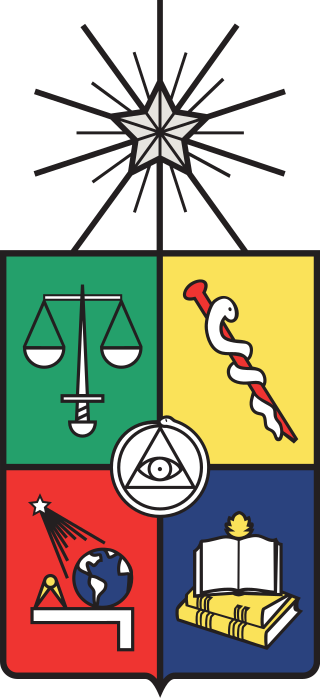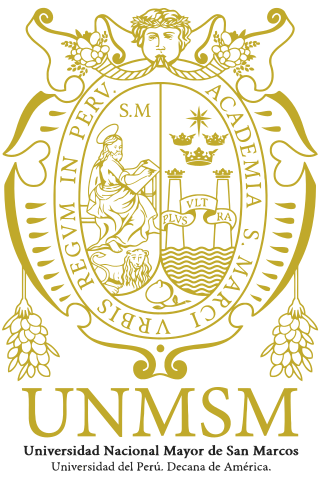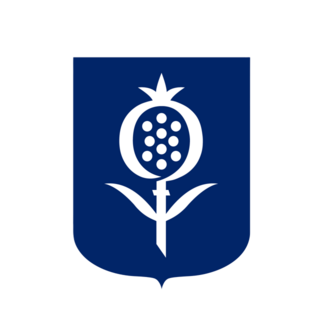Related Research Articles

The University of Puerto Rico is the main public university system in the U.S. Commonwealth of Puerto Rico. It is a government-owned corporation with 11 campuses and approximately 44,200 students and approximately 4,450 faculty members. UPR has the largest and most diverse academic offerings in the commonwealth, with 472 academic programs of which 32 lead to a doctorate.

The National Autonomous University of Mexico is a public research university in Mexico. A portion of Ciudad Universitaria is a UNESCO World Heritage site that was designed and decorated by some of Mexico's best-known architects and painters of the 20th century. The campus also hosted the main events of the 1968 Summer Olympic Games. All Mexican Nobel laureates are alumni or faculty of UNAM. UNAM is renowned for its highly competitive admissions, with acceptance rates typically below 10%, and its research and education being globally recognized. UNAM was founded, in its modern form, on 22 September 1910 by Justo Sierra as a secular alternative to its predecessor, the Royal and Pontifical University of Mexico. UNAM was also the birthplace of the student movement of 1968.

Instituto Tecnológico y de Estudios Superiores de Monterrey, also known as Tecnológico de Monterrey or just Tec, is a private research university based in Monterrey, Mexico, which has grown to include 35 campuses throughout the country. One of only 45 universities in the world to be ranked with 5 QS Stars, it is widely recognized as one of the most prestigious universities in Latin America.

The University of Puerto Rico, Mayagüez Campus (UPRM) or Recinto Universitario de Mayagüez (RUM) in Spanish, is a public land-grant university in Mayagüez, Puerto Rico. UPRM is the second-largest university campus of the University of Puerto Rico system. In addition to its status as a land-grant university, it is also a member of the sea-grant and space-grant research consortia. In 2009, the campus population was composed of 12,108 students, 1,924 regular staff members, and 1,037 members of the education staff. In 2013, the student population remained relatively steady at 11,838, but the instructional faculty dropped to 684. In the second semester of 2019 around 12,166 students were enrolled. By the end of the academic year 2022-2023 there were 10,071 students enrolled. UPRM has been accredited by the Middle States Commission on Higher Education (MSCHE) since 1946.

The University of Chile is a public research university in Santiago, Chile. It was founded on November 19, 1842, and inaugurated on September 17, 1843. It is the oldest in the country. It was established as the continuation of the former colonial Royal University of San Felipe (1738), and has a rich history in academic, scientific and social outreach. The university seeks to solve national and regional issues and to contribute to the development of Chile. It is recognized as one of the best universities in Latin America for its leadership and innovation in science, technology, social sciences, and arts through the functions of creation, extension, teaching, and research. It is considered the most important and prestigious university in the country.

The Pontifical Catholic University of Chile is a traditional private university based in Santiago, Chile. It is one of the thirteen Catholic universities existing in Chilean university system and one of the two pontifical universities in the country, along with the Pontifical Catholic University of Valparaíso. Founded in 1888, it is one of Chile's oldest universities and one of the most recognized educational institutions in Latin America.

The University of Oviedo is a public university in Asturias (Spain). It is the only university in the region. It has three campus and research centres, located in Oviedo, Gijón and Mieres.

The National University of San Marcos is a public research university located in Lima, the capital of Peru. It is considered the most important, recognized and representative educational institution at the national level. At the continental level, it is the first officially established and the oldest continuously operating university in the Americas, which is why it appears in official documents and publications as "University of Peru, Dean University of the Americas".

The Public University of Navarre, also known by its acronym UPNA or NUP, is a public university created in 1987 by the government of the Spanish autonomous region of Navarre. It has three campuses located in Pamplona and Tudela. Its activity began in 1989.

The Autonomous University of Madrid, commonly known as la Autónoma, is a Spanish public university located in Madrid, Spain. The university was founded in 1968 by royal decree. UAM is widely respected as one of the most prestigious universities in Europe. According to the QS World University Rankings 2022, UAM is ranked as the top university in Spain and has consistently ranked as #1 in Spain in the El Pais University rankings, published annually. Among its notable alumni, which include every president that the Supreme Court of Spain and Constitutional Court of Spain has had, is the current King of Spain, Felipe VI, who studied the Licenciatura en Derecho (Law) and is the president of UAM’s alumni society.

Ocaña is a municipality of Spain, in the province of Toledo, Castilla–La Mancha.

The Universidad de La Sabana is a private university in Colombia, supervised by the Colombian Ministry of Education. It was founded on September 21, 1979 by the Asociación para la Enseñanza Aspaen, its predecessor was the INSE "Instituto Superior de Educación", considered one of the first in distance education in the country and Latin America.

The Central University of Venezuela is a public university located in Caracas, Venezuela. The university is widely regarded as the highest ranking institution in the country. Founded in 1721, it is the oldest university in Venezuela and one of the oldest in the Western Hemisphere. It is ranked 18th among the universities in Latin America.

Nacozari de García is a small mining town surrounded by the Nacozari de García Municipality in the northeast of the Mexican state of Sonora.

The University of Valle, also called Univalle, is a public, departmental, coeducational, research university based primarily in the city of Cali, Valle del Cauca, Colombia. It is the largest higher education institution by student population in the southwest of the country, and the third in Colombia, with more than 30,000 students. The university was established by ordinance No. 12 of 1945, by the Departmental Assembly as the Industrial University of Valle del Cauca, under the leadership of Tulio Ramírez Rojas and Severo Reyes Gamboa.

The National University of the Northeast is an Argentine national university. It is located in the cities of Corrientes and Resistencia, capital cities of the Provinces of Corrientes and Chaco respectively, and was established on December 4, 1956. Known as the University of the Sun, it was the seventh-largest university in Argentina by student enrollment numbers as of 2017.

The Autonomous University of Nayarit is a Mexican public university based in the city of Tepic, Nayarit, that offers secondary education in addition to undergraduate and graduate education. The university offers 15 preparatory schools located across the major regions of the state. The university offers 33 undergraduate degrees and 28 postgraduate degrees. Enrollment at the university level has been rising since 1996.

Granados is a municipality in the Mexican state of Sonora, located approximately 180 kilometres (110 mi) northeast of Hermosillo, the state capital. It is named after José Joaquín Granados y Gálvez, the second bishop of Sonora from 1788 to 1794.

The Universidad del Mar «UMAR» is a public institution of higher education and scientific research of the Government of the State of Oaxaca, Mexico, with the support and recognition of the Federal Government, it belongs to the Oaxaca State University System (OSUS), it has three university campuses: Puerto Angel, Puerto Escondido and Huatulco and a Center of Tourist Training (CECAT). Its main functions are: teaching, research, cultural diffusion and promoting development.
Samuel Ocaña García is a Mexican politician and doctor who served as the Governor of Sonora from 1979 to 1985 as a member of the Institutional Revolutionary Party (PRI). He was known for his contributions towards the advancement of Sonoran culture and education during his term.
References
- ↑ "Agrega Universidad de la Sierra en Moctezuma las licenciaturas en Turismo y Administración". Proyecto Puente (in Spanish). 19 August 2022. Retrieved 3 April 2023.
- 1 2 3 4 5 6 "Historia" (in Spanish). Universidad de la Sierra. Retrieved 3 April 2023.
- 1 2 "Decreto que Crea la Universidad de la Sierra" (PDF) (in Spanish). Gobierno del Estado de Sonora. Retrieved 3 April 2023– via Universidad de la Sierra.
- ↑ Coronado García, Manuel Arturo (2007). Pertinencia social universitaria: Enfoques y perspectivas de profesores, estudiantes y empleadores (in Spanish). Hermosillo: Qartuppi. p. 50. doi:10.29410/QTP.17.03. ISBN 978-607-97784-0-8.
- ↑ Coronado García, p. 33
- ↑ Coronado García, p. 54
- ↑ "La Unisierra está en el abandono; tensa relación entre maestros y autoridades". Primera Plana Digital (in Spanish). 13 February 2015. Retrieved 3 April 2023.
- ↑ Fajardo, Emma (16 November 2019). "Construyendo puentes, no muros" (in Spanish). Sky Island Alliance. Retrieved 3 April 2023.